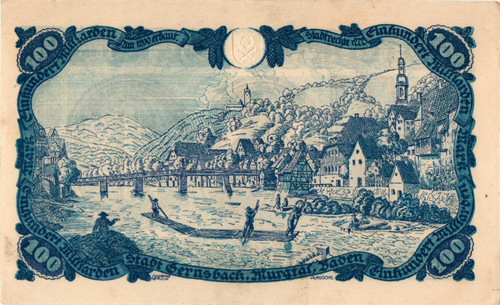The 1923 Cassel Henschel & Sohn 100 Billion Mark Train banknote stands as a profound testament to the hyperinflation era that engulfed Germany in the aftermath of World War I. This banknote, featuring the esteemed locomotive manufacturer Henschel & Sohn, not only represents the pinnacle of German industrial and engineering excellence but also illustrates the severe economic conditions of the time. With a denomination of 100 billion marks, it highlights the unprecedented hyperinflation that drastically devalued the German currency.
Design and Features:
This banknote is expected to display an elaborate design, emphasizing the legacy of Henschel & Sohn in the railway industry. The imagery likely includes a detailed depiction of a train or locomotive, symbolizing the company’s contribution to transportation technology. Such designs serve as a bridge between Germany's industrial achievements and the economic challenges represented by the note's high denomination.
Historical Significance:
Issued in 1923, this banknote captures a critical moment in Germany's history, when hyperinflation reached its peak. The presence of Henschel & Sohn on the banknote reflects the enduring significance of the railway industry as a symbol of progress and resilience, even in the face of economic turmoil. It offers a unique lens through which to explore the intersection of industry, economy, and history during one of the most tumultuous periods in German history.
Collector's Value:
As an XX-RARE collectible, the 1923 Cassel Henschel & Sohn 100 Billion Mark Train banknote holds immense appeal for numismatists, historians, and enthusiasts of railway memorabilia. Its significant denomination, combined with the historical and industrial relevance of Henschel & Sohn, makes it a highly sought-after piece among collectors, particularly those interested in the hyperinflation period and German industrial history.

















